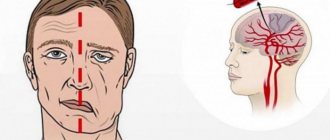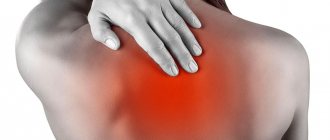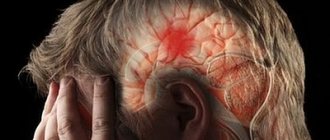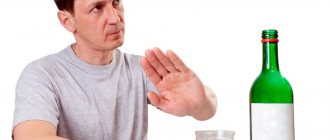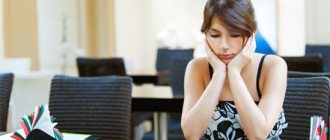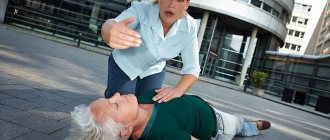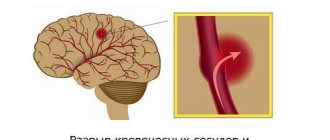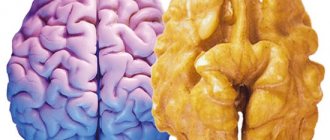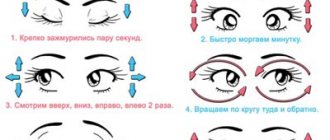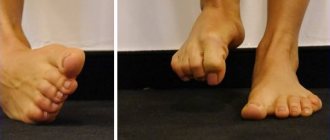Your volleyball > Articles > Nutrition for stroke
A stroke is an acute disorder of cerebral circulation, in which brain cells do not receive enough nutrients and oxygen from the bloodstream, which leads to irreversible damage and even death of neurons. Being the most dangerous critical condition, a stroke often leads to the death of the patient, and those who survive such a vascular catastrophe often remain disabled for life.
Although stroke can affect people of different ages, genders and health conditions, there are risk groups - categories of patients who have an increased likelihood of developing vascular disorders, and in particular stroke. In addition to people suffering from hypertension, atherosclerosis, diabetes mellitus and bad habits, a separate risk group consists of patients who indulge in unhealthy eating habits.
According to the results of recent studies by leading European experts, people who eat properly have a reduced risk of stroke by at least 15-17%. As for the role of diet after a stroke, here the nutritional factor is especially important, because restoring the functional activity of all body systems is impossible without fully saturating the cells with essential nutrients, vitamins and minerals.
Diet goals for stroke
Nutrition plays an important role both in the process of preventing stroke and after a vascular crisis. The principles of the stroke diet are the same and are aimed at achieving the following goals:
- improvement of blood circulation in all parts of the body;
- blood pressure control - preventing blood pressure from rising above 140/90;
- lowering cholesterol levels in the blood and preventing the formation of cholesterol plaques in the vascular bed;
- acceleration of all metabolic processes, especially the stages of fat and carbohydrate metabolism;
- reducing the load on the cardiovascular system, kidneys and liver;
- normalization of the patient's weight.
Creating the right diet for a patient who has suffered a stroke is the most important stage of secondary prevention (preventing a re-exacerbation).
How to protect yourself from stroke: advice from doctors
World Stroke Day is celebrated on October 29th. On this day, Muscovites are invited to check their health and receive consultations from neurologists in city health centers. A correspondent for the online publication m24.ru found out why it is important to pay attention to stroke prevention and collected recommendations from doctors on how to protect yourself from this disease.
Photo: TASS/Sergey Bobylev
A stroke is an acute disturbance of blood circulation in the brain. It has several varieties. The most common is ischemic stroke. In this case, blood does not flow to a certain area of the brain due to blood clots or blocked vessels. Approximately 70–80 percent of cerebral circulatory disorders fall into this category.
As of September 2021, mortality from ischemic strokes is declining in the capital. It is close to the European average: 26 percent versus European 20 percent. On average in Russia, mortality from this disease remains high. Every year 150 thousand people die this way. For comparison, 64 thousand people die from myocardial infarction nationwide.
The second type is cerebral hemorrhage. Most often it occurs in people aged 45–60 years, in young people it can occur against the background of cocaine addiction. Precursors of an acute condition in the form of fever, blurred vision and severe headache are rare. Most often, this type of stroke occurs suddenly, during the daytime during stress or overload. Cerebral hemorrhages account for about 20 percent of all strokes.
The least common type of hemorrhage is subarachnoid hemorrhage (SAH), where blood from a ruptured aneurysm enters the space between the arachnoid and soft tissue of the brain. There are no warning signs for this type of stroke. With SAH, a sharp headache begins (resembling a blow to the head), nausea, vomiting, and fainting often occurs. This type of acute condition is very dangerous and leads to severe consequences for the survivor, even if hospitalized in a timely manner.
Any of the above types of stroke can lead to the death of a person, and the patient who successfully survived the attack can be left disabled. Loss of blood supply deprives brain cells of oxygen and they die. With their death, a person’s vision and hearing may deteriorate, the ability to speak and even walk may be impaired.
"Lifestyle": Rehabilitation after stroke
According to observations by the World Health Organization, mortality from stroke is equally distributed between men and women. Most often, deaths from it occur in countries with low and middle income levels.
Treatment after an attack involves long and complex rehabilitation. The chance of remaining disabled after a stroke is 80 percent. Therefore, doctors all over the world recommend mandatory prevention of this dangerous disease.
Associate Professor of the Department of Neurology and Neurosurgery, neurologist Rustem Gaifutdinov: “Since stroke prevention is associated primarily with a healthy lifestyle, it is best to form good habits from childhood. The right taste in food, the habit of physical activity and resistance to stress are easier to develop at a young age. But prevention can be effective, even if it starts much later. You can change your lifestyle even after 50 years, if you take the matter seriously.”
WHO recommends how to protect yourself from stroke
WHO experts say that up to 80 percent of premature heart attacks and strokes can be prevented. The basis of prevention is proper nutrition, regular physical activity and abstinence from using any tobacco products.
In addition, you need to track several important indicators of your body's health. The first is pressure. High blood pressure is not accompanied by obvious illness, but remains one of the main causes of sudden stroke or heart attack. You will have to monitor your performance yourself. If you have high blood pressure, you should consider changing your lifestyle or taking medications.
It is also worth keeping an eye on the level of cholesterol in the blood. Increased lipid content increases the risk of vascular blockage. Sugar levels are also important - doctors call diabetes one of the companions of stroke.
Proper nutrition
WHO has compiled a detailed diet for everyone who wants to maintain a healthy heart and blood vessels. The organization's specialists have identified categories of recommended products, as well as foods that can be consumed in a limited manner and those that are not recommended to be eaten at all.
It is curious that alcohol is not included in the list of strictly prohibited products; WHO only asks to limit its use. Experts prohibit anything that contains a large amount of fat - cream, butter, pastry cream, lard and mayonnaise. In addition, fried potatoes, goose, duck and other fatty meats are prohibited. Among fish products, the taboo applies only to caviar, and among drinks - to Irish coffee and hot chocolate with the addition of full-fat milk or cream.
What can you eat
Meat: chicken, turkey, veal, rabbit, game (wild ducks, partridges, hare). Fish: all white fish: cod, hoddock, flounder. Fatty fish: herring, mackerel, sardines, tuna, salmon (chum salmon, pink salmon, salmon). Dairy products: skim milk, low-fat cheeses (for example, pressed cottage cheese), skim milk cheese, curdled milk cheese. Low fat kefir. Fruits/vegetables: all fresh and frozen vegetables, peas, beans, olives. Dried legumes: peas, beans, lentils. Boiled potatoes (peeled or in their jackets, eating the skins whenever possible). Fresh fruits, unsweetened canned fruits, walnuts, chestnuts. Cereals: wholemeal flour (unsifted), bread made from it. Unmilled (whole) grains, oatmeal, wheat flour. Oatmeal. Unpolished rice and rice paste. Rusks cooked in the oven. Oat cookies. Yeast-free bread. For dessert: low-fat puddings: jelly, sherbet, skim milk puddings, low-fat condiments (mashed potatoes). Drinks: tea, coffee, mineral water, unsweetened drinks, fruit juices without sugar. "Clean" soups. Homemade vegetable soups. Low alcohol beer. The rest: herbs, spices, mustard, pepper, vinegar. Low-fat condiments: lemon, yogurt.
Regular physical activity A healthy cardiovascular system can be maintained by as little as 30 minutes of physical activity per day. And if you need to additionally lose all of it, then the duration of training should be increased to an hour, exposing the body to stress most days of the week.
Associate Professor of the Department of Neurology and Neurosurgery, neurologist Rustem Gaifutdinov: “Any load will do. Even if a person devotes 30 minutes only to walking, or better yet to running. The ideal option, of course, is a gym, where a trainer can choose a good cardio load. A great option is swimming.
It has been proven that regular physical activity allows you to avoid taking any blood thinning medications.
Well, if your health doesn’t allow you to move at all, then you can play chess, forcing your brain to work.”
Abstinence from tobacco use
Tobacco is harmful to health in any variety. In order to avoid a stroke, you will have to completely give up cigarettes, cigars, pipes, chewing tobacco or snuff. Passive smoking is also dangerous. The risk of having a heart attack or stroke begins to decline immediately after you stop using tobacco products, and after a year it can drop by 50 percent.
Associate Professor of the Department of Neurology and Neurosurgery, neurologist Rustem Gaifutdinov: “Smoking increases the chance of developing a stroke by five to six times. Therefore, giving up this habit is an effective and very important method of prevention.
To date, the effect of electronic cigarettes on the risk of stroke is not known; they appeared not so long ago and there have not yet been serious clinical studies. But in my opinion, maintaining nicotine addiction, even with the exclusion of combustion products of tobacco, in any case has a negative impact on health.”
Limiting alcohol consumption
Those who are not ready to completely give up alcohol should limit their consumption and reconsider their tastes. Strong alcoholic drinks are guaranteed to cause harm to the body, and a healthy dose of such alcohol does not exceed 20 grams per day. An exception to the whole series of alcoholic drinks is dry red wine. It is believed that one glass of drink a day not only does not cause harm, but can also help improve health.
Associate Professor of the Department of Neurology and Neurosurgery, neurologist Rustem Gaifutdinov: “For me, the benefits of red wine have not been proven. I cannot recommend its regular use, but on the other hand, the experience of other countries shows that in reasonable doses this drink does not cause any particular harm to health.”
Drug prevention of strokes
There is an opinion that regular use of nootropics can prevent problems with blood circulation in the brain. There are six types of such medications on the market, and all of them have properties that help protect brain cells in conditions of oxygen deprivation.
Associate Professor of the Department of Neurology and Neurosurgery, neurologist Rustem Gaifutdinov: “We do not prescribe nootropics for therapy after a stroke. A brain experiencing a lack of oxygen should not be accelerated, but calmed down. And in general, the benefit of neuroprotectors during strokes has not been confirmed in large-scale clinical trials.
Some experts give patients 10 tablets of glycine under the tongue during hospitalization; it is believed that it helps protect the brain. But, again, I will say that this has not been proven, it’s true, and there is no harm.”
How to recognize the onset of an ischemic stroke
If a person has a stroke, then every minute counts. Safe rescue, and, no less important, rehabilitation directly depend on the speed of hospitalization and initiation of treatment. In order for the harm after an attack to be minimal, it must be recognized in time.
A few years ago, a story spread all over the Internet about a girl who suddenly fell at a picnic, thinking that she had tripped over a stone, and by night she died of a stroke. The author of the article described signs of illness that her friends did not pay attention to. The deceased could not smile fully, had difficulty speaking, and had poor balance. Those around him considered it unusual, but attributed it to a bad fall and fatigue. As a result, the heroine of the story died on the night of the same day.
At the end of the text, the author wrote several simple ways to determine that a loved one is having a stroke. You need to ask him to do a few simple steps:
1) smile ˜– he will not be able to or the smile will be crooked (one-sided); 2) raise both hands - he will not be able to, or he will raise them just a little; 3) say a simple phrase - speech will be slowed down or the phrase will not be remembered; 4) stick out your tongue; if it is curved, it could be a stroke.
Associate Professor of the Department of Neurology and Neurosurgery, neurologist Rustem Gaifutdinov: “We have approximately 4.5 hours to save a person during a stroke. Moreover, if hospitalization and treatment arrive at the end of this time, the person is almost guaranteed to remain a helpless disabled person.
Nerve cells die in six minutes without blood and oxygen. But if treatment begins in the first hours, then only the core of the stroke - its focus - will be affected, and the penumbra formed around this core can still be restored. Then the person will be able to move independently and take care of himself. True, only a few patients can return to work after this disease.
Doctors around the world are trying to ensure that help is provided to people affected by this disease as soon as possible. In Germany now there are ambulances with equipment that allows you to start therapy while a person is being transported to the hospital.”
A test should be performed if symptoms of the disease are present. A dangerous condition may be accompanied by the following signs:
– sudden weakness in the arm and/or leg; – sudden numbness in the arm and/or leg; – sudden disturbance of speech and/or its understanding; – sudden loss of balance, loss of coordination, dizziness; – sudden loss of consciousness; – acute headache without any apparent reason or after severe stress or physical strain; - sudden numbness of the lip or half of the face, often with a distortion of the face - all this against the background of unusually low or, conversely, high blood pressure.
If these signs are detected, you should immediately call an ambulance. The description of the ailment in a conversation with the dispatcher should be as accurate as possible so that the correct team is sent to the patient.
Patients with stroke are taken to specialized medical institutions - regional vascular centers or departments that are equipped to provide specialized medical care. There are 29 such centers and departments in Moscow, and the average ambulance arrival time is 12 minutes.
There are a few other simple things you can do while the ambulance is on the way. To begin with, you need to place the patient on high pillows so that the head is about 30 degrees above the level of the bed. You can then provide fresh air into the room by opening a window. The patient needs to be released from the belt, the shirt collar unbuttoned, or tight clothing removed. After this, you can measure his blood pressure.
Carefully monitor the person’s condition until the ambulance arrives. During a stroke, nausea and vomiting may occur. In this case, you need to turn the patient on his side and place a bowl or tray under the lower jaw. It is very important to make sure that the person managed to spit out all the masses.
Stroke is treated in a hospital setting. After the attack is defeated, it is advisable to undergo rehabilitation in a hospital. The chance of overcoming side effects under the supervision of doctors is much higher than with home treatment. Additionally, among patients who overcome a stroke on their own, the mortality rate within 30 days of the attack is about 43 percent. In hospitals, this figure is almost halved.
It is also important that a whole team of specialists works with patients in the hospital. Nowadays, those who have suffered a stroke are treated not only by nurses and neurologists, but also by psychologists, physiotherapists, cardiologists and a number of other specialists.
A person has four to six months to recover from a stroke. During this time, the most effective rehabilitation occurs. After hospital therapy, the patient may be sent to a sanatorium. This opportunity should not be neglected, since after the precious six months it will be almost impossible to achieve restoration of the body.
Plot: Convenient city: everything you need to know
What can you eat if you have a stroke: table No. 10
The main question that arises in the process of prevention and recovery from cerebrovascular accidents is what you can eat during a stroke. Most experts agree that the nutrition of patients in this group should be complete and varied, but the diet involves certain restrictions. An excellent example of the dietary diet of stroke patients is the technique developed by Soviet nutritionists, which was called “table No. 10.”
This technique assumes the following principles:
- Caloric content of the diet. The patient's daily caloric intake should be 2500-2600 kcal. Calorie restriction is achieved by reducing the consumption of simple fats and carbohydrates, which contribute to the development of atherosclerosis and blockage of blood vessels, which provokes a stroke.
- Chemical composition of food. The daily ration of the “table No. 10” diet should contain no more than 400 grams of carbohydrates, 90 grams of proteins (55-60% animal) and 70 grams of fat (25-30% vegetable). A restriction on salt consumption is also being introduced, the content of which in the daily diet should not exceed 6-7 grams.
- Method of preparing food. Meat, fish and vegetables are steamed, boiled or baked without the use of fat and with minimal addition of salt and spices.
- Regularity of meals. The patient is recommended to eat 5-6 times a day in small portions, with equal intervals between meals of approximately three hours. The last meal should be 3 hours before bedtime.
- Drinking liquids. The diet introduces a limit on daily fluid intake at 1.2 liters of clean water per day.
The method of therapeutic nutrition “table No. 10” is based on the following principles:
- First meal. The diet recommends preparing vegetarian soups with vegetable broth. Meat, mushroom and fish first courses, as well as soups containing legumes, are completely excluded from the diet. Vegetable soups can contain potatoes, beets, carrots, tomatoes, and various cereals. The serving of the first course should be from 200 to 400 grams.
- Meat, fish, poultry. It is allowed to eat lean meat - beef, veal, chicken, turkey, rabbit, as well as trimmed pork in small quantities. The meat is boiled, baked, or steamed, and also served as aspic. The consumption of fatty meat is excluded - fatty pork, goose and duck meat, offal (liver, kidneys, brains), smoked sausages, as well as any canned food. Lean fish can be prepared by boiling followed by baking or frying. Fatty fish, as well as salted, smoked and dried fish, caviar and any canned fish are completely excluded from the diet.
- Dairy products. If the patient does not have intolerance, low-fat kefir and cottage cheese are allowed. The “table No. 10” food system allows for limited addition of sour cream, cream and cheese to dishes. Salty and fatty cheeses are completely excluded from the diet.
- Eggs. You can eat 1 egg per day, soft-boiled or served as a steamed omelette or baked in the oven. Fried and hard-boiled eggs are completely excluded from the diet.
- Cereals. The diet includes cereals cooked in water or milk in the form of puddings, as well as pasta. Legumes are completely excluded.
- Vegetables and fruits. The following vegetables are allowed to be consumed: potatoes, cauliflower, tomatoes, carrots, beets, zucchini, pumpkin, cucumbers, lettuce, as well as parsley and cilantro as a seasoning for food. White cabbage and green peas can be consumed in limited quantities. Vegetables can be cooked by boiling and baking with minimal addition of salt. It is advisable to eat more fresh fruits and vegetables. Salted, pickled and pickled vegetables should be excluded from the diet. It is also recommended to completely avoid eating and adding radishes, spinach, sorrel, garlic, onions and mushrooms to dishes. Ripe fruits, fresh berries and dried fruits can be consumed without restrictions. It is also recommended to introduce into the diet compotes, mousses, jelly, honey and jam with minimal sugar content.
- Beverages. Patients can drink weak tea, vegetable and fruit juices (except grape juice), and rosehip decoction. Natural coffee and cocoa are completely excluded.
Compliance with the above recommendations allows you to avoid the development of atherosclerosis, maintain normal functioning of the cardiovascular system and reduce the risk of stroke. Also, “table No. 10” is one of the options for proper nutrition during the recovery period after an acute vascular crisis.
Recommended Products
Not all foods and dishes are suitable for a person who has had a stroke. It is important that the products are as fresh as possible, and that the dishes are consumed immediately after preparation. Storing meals from the diet in the refrigerator for more than two days leads to an increase in the number of bacteria in them, which can enter the patient’s intestines, causing bloating and excessive gas formation.
Basic diet
To ensure all biochemical processes in the body aimed at rehabilitation, it is important to remember that the basis of the diet is simple dishes consisting of 1-2 ingredients. The simpler the food, the easier it is to digest and assimilate.
The basis of the diet consists of the following products:
- Porridges - replenish the deficiency of fiber, which is needed for proper digestion and good peristalsis, and also saturate the body with energy, as they are complex carbohydrates.
- Meat dishes saturate the body with important proteins that are involved in the regeneration of damaged brain cells.
- Fish - you should take only those types of fish that contain less fat.
- Vegetable dishes help digest meat dishes and also speed up the digestion process in the intestines. Replenish the deficiency of vitamins and beneficial microelements.
- Dairy and fermented milk products - in addition to their high protein content, can normalize the intestinal microflora, enriching it with beneficial lactobacteria.
- Seafood accelerates intracellular metabolism, allowing you to remove accumulated waste and toxins from the body.
- Berries - cranberries and blueberries are leaders in the content of antioxidants, which contribute to the rapid elimination of all free radicals.
Menu for the first 5 days
To understand exactly how to eat in the first days after a stroke, you can use the tips in the table.
| Monday | Tuesday | Wednesday | Thursday | Friday | |
| Breakfast | Oatmeal with milk | Rice porridge with milk with 5 g butter and honey | Buckwheat porridge with milk | Rice pilaf with chicken | Buckwheat with tomato and chicken meatballs |
| Lunch | A glass of dried fruit compote, oatmeal cookies | A glass of kefir with a rye bun | Glass of milk with shortbread | A glass of jelly with biscuits | Glass of juice with cookies |
| Dinner | Chicken meatball soup | Vegetable soup | Potato soup with turkey meat | Vegetable soup, steamed chicken cutlet, cabbage and cucumber salad | Rice soup, rabbit cutlet, tomato and cucumber salad |
| Afternoon snack | Ryazhenka with cookies | Cottage cheese with raisins | Kefir with bun | Yogurt | Milk with biscuits |
| Dinner | Milk soup | Steam cutlet with stewed vegetables | Steamed fish (hake, pollock, halibut) with vegetables | Fish cutlets with buckwheat | Fish baked with potatoes and vegetables and cheese |
| Late dinner | Kissel | Low-fat kefir | Cottage cheese with fruit | Compote | Natural yogurt |
This menu is balanced and also fully meets all the nutritional requirements of patients after a stroke.
Drink
In the post-stroke period, it is important to maintain water balance by drinking at least 2 liters of clean water. Water is a natural solvent that can remove everything unnecessary from the body. Drinking plenty of water will achieve the following results:
- blood pressure will decrease;
- the blood will become less thick, which will facilitate its passage in smaller and damaged vessels;
- water supports digestion processes, preventing the development of constipation;
- removes waste and toxins, neutralizing the side effects of medications;
- prevents the accumulation of salts in the ureters, which reduces the risk of fluid stagnation with the addition of urinary tract infections;
- saturates the body with useful salts and microelements.
It is important that the water is mineral or regular table water, but purified. You cannot drink water from the tap, from wells and springs. It may contain pathogenic microorganisms that, once in the body, provoke an inflammatory process.
In addition to water, you can diversify your drinking regimen with juices and compotes. Cranberry and blueberry fruit drinks are ideal, as they have a diuretic effect, allowing you to speed up diuresis.
Note! You should drink in small portions 20 minutes before meals and 1 hour after. It is not recommended to drink in glasses, as this may cause vomiting.
Salt
Since salt promotes water retention in tissues and cells, it should be avoided or consumption reduced to a minimum. It is recommended to add salt to dishes not during cooking, but immediately before consumption. Reducing salt intake will normalize blood pressure and also reduce swelling. The maximum allowable amount of salt per day should not exceed 6 g.
Nutrition in the first days after a stroke
Nutrition during a stroke in the first days after the experience is difficult due to the patient’s serious condition. Eating solid foods is often impossible. In this regard, boiled, steamed or baked foods must be served in the form of puree. Often, patients after a stroke are not able to drink fluids in their normal state, which requires the addition of special thickeners. During this period, experts often recommend introducing baby food into the patients’ diet, which fully complies with the requirements for acceptable products after an acute cerebrovascular accident.
In the first days after a stroke, it is very important to ensure a regular supply of food - at least 5 times a day. Portions should be small (200-250 grams) in order to eliminate the high load on the patient’s weakened body. During this period, most experts recommend completely abstaining from consuming dairy products, as well as any oils and fats. Meat should be introduced into the diet gradually, increasing its quantity in order to minimize the load on the digestive system in the first days after a vascular crisis.
It is very important to saturate the patient’s diet with foods rich in folic acid, which promotes the full restoration of damaged brain tissue. This category of products includes fish, fresh fruits and whole grains.
Products prohibited for use during stroke
The diet menu for cerebral stroke cannot contain the following products:
- any products made from white flour - muffins, pastries, white bread, pancakes, etc. Preference should be given to coarse rye flour of the 2nd grade;
- fatty and fried foods;
- any canned food, pickles, pickled and soaked vegetables and fruits;
- smoked sausage, smoked fish, smoked meats;
- fatty dairy products (sour cream, cream, full-fat cottage cheese), as well as factory-produced dairy products that have a long shelf life;
- sweets - candies, cakes, cookies, halva, etc.;
- poultry skin due to its high content of toxic substances and hormones;
- fast food, semi-finished products, as well as any products containing a large amount of preservatives and stabilizers;
- radishes, turnips, sorrel, spinach, mushrooms, legumes.
The daily intake of sodium chloride is limited, which is necessary to prevent an increase in blood pressure. It is also advisable to avoid foods containing sugar, since any disorders of carbohydrate metabolism lead to changes in the condition of the vascular wall and provoke various cerebral circulation disorders, including stroke.
You should eat potatoes and pasta no more than twice a week. It is advisable to steam or bake potatoes. A diet after a stroke at home involves supplementing the side dish with foods high in fiber. Grains help lower cholesterol levels. Preference should be given to dark varieties of rice, buckwheat, and wheat cereals, excluding white rice from the diet, the beneficial properties of which are much less pronounced.

